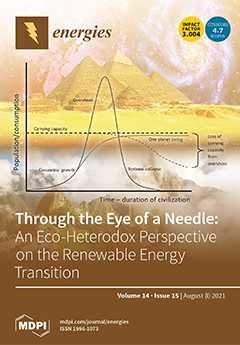In recent literature, the impact of economic policy uncertainty (
EPU) on macro aspects have been investigated, but the aspect of energy, precisely renewable energy still to explore. The motivation of the study is to produce fresh evidence regarding the nexus between
[...] Read more.
In recent literature, the impact of economic policy uncertainty (
EPU) on macro aspects have been investigated, but the aspect of energy, precisely renewable energy still to explore. The motivation of the study is to produce fresh evidence regarding the nexus between
EPU and renewable energy consumption (
REC) with the mediating role of forcing direct investment (
FDI) and financial development (
FD) in BRIC nations for the period 1997q1–2018q4. The study applied unit root tests following Ng-Perron and Zivot and Andrews for detecting variable’s stationary properties. The long-run cointegration was evaluated by implementing Bayer, Hanck combined the cointegration test, Bound testing approach, and t
BDM test. Both linear and non-linear ARDL were implemented to evaluate long-run and short-run shocks, and directional causality was assessed through a non-granger causality test. Furthermore, the study implemented robustness by implementing fully-modified OLS, dynamic OLS, and canonical cointegrating regression (CCR). Unit root test established the variables are stationary after the first difference; moreover, the Bayer and Hanck cointegration test confirmed the long-run association between
EPU,
FD,
FD, and
REC in BRIC nations. Accruing to ARDL estimation, adverse effects running from
EPU to
REC both in the long run and short run. Furthermore, the positive statistically significant linkage revealed for
FDI and
FD to
REC implies that clean energy integration could be augmented with continual inflows of
FDI and development of the financial sector. Model estimation with asymmetric assumption, the study documented asymmetric effects running from
EPU,
FDI, and
FD to renewable energy consumption, especially in the long run. Finally, the directional causality revealed unidirectional causality between
REC and EPU, whereas the feedback hypothesis was disclosed for
FDI and
REC] and
FD and
REC. Study findings postulated that the role of foreign direct investment and financial development is critically significant because technological advancement and capital investment augment clean energy integration through the application of renewable energy.
Full article





